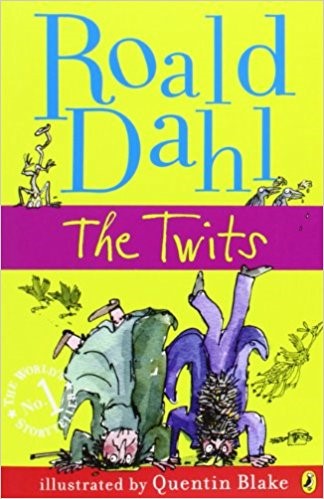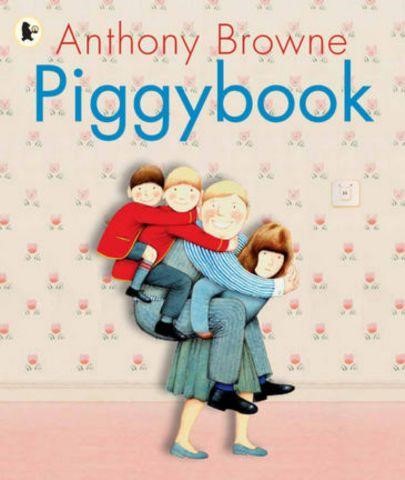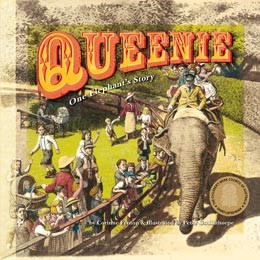Role play and drama can offer an authentic context for students to engage in new discourses. These contexts can provide situations where students can be comfortable to speak, respond, initiate ideas, argue, be tentative and reflect (Harden, 2016).
Supporting EAL/D learners in role play and drama
For EAL/D students, role play and drama can provide an opportunity to communicate without relying solely on producing their own oral language. Through physical performance, use of script and group improvisation activities, EAL/D students can develop confidence in communicating or performing with their classmates. The opportunity to rehearse language that is part of a role play, a script or reader's theatre text also enables EAL/D students to build fluency in English.
Teacher-in-role
A supportive strategy that can be used to model role play to explore understandings about texts. This teacher-led strategy ensures that discussion stays focussed on a specific topic as the teacher ‘becomes’ the character. The teacher makes a conscious decision to model vocabulary and sentence structures that are linked to the text. This strategy also allows the teacher to focus on a critical part of a text that elaborates on a theme or ideas that are pertinent to greater understanding (Fisher, Jones, Larkin and Myhill, 2010).
For example, after the teacher has read a chapter of The Twits by Roald Dahl, they take on the persona of Mrs Twit (using gestural movements and voice modulation to signal the role change).
 Roald Dahl The Twits Jonathan Cape Ltd and Penguin Books Ltd.
Roald Dahl The Twits Jonathan Cape Ltd and Penguin Books Ltd.
The teacher describes Mr. Twit and what she thinks of him, including a description of the mean jokes she likes to play on him. Students then talk with a partner about what the teacher-in-role has said about Mr. Twit, adding in other examples about his description or personality. This partner discussion provides an oral rehearsal of the ideas and vocabulary in the text. Students are then better able to respond to ideas or themes within a text (whether orally or in written form).
Supporting EAL/D learners through teacher-in-role
To support EAL/D students, use sounds, facial expressions and gestures that students can understand without relying solely on language.
The teacher might also pre-teach vocabulary and sentence structures to describe those expressions and gestures.
The teacher displays a number of personality traits supported by visuals and discusses with the students what these traits are. Then during the performance, the teacher asks students to name or point to the trait being portrayed and explain why they chose it.
The teacher could also provide a set of pictures or written short descriptions of the practical jokes on cards to groups of 3-4 students. When the teacher describes or performs the practical joke, students hold up the corresponding card.
Students-in-role
A similar strategy to support discussion about texts, however, this time, a student takes on the role of a character. Through the talk created by the student-in-role and the listeners, this strategy can assist the development of student understandings and promote the exploration of ideas before writing. This is particularly helpful for EAL/D students as they get the chance to articulate ideas and hear other’s talk about the same theme or topic.
Roald Dahl The Twits Jonathan Cape Ltd and Penguin Books Ltd.
For example, students might work in pairs where one student takes on the role of a Muggle-Wump, a caged monkey who is made to stand on its head all day by Mr and Mrs Twit. The student taking on the role then articulates the Muggle-Wump’s anger and frustration at the Twits and discusses the plan for revenge. Through this role play, key ideas and vocabulary are reviewed and restated. The listening partner can ask questions or clarification from the student-in-role and together more complete understandings of the text can be built.
Supporting EAL/D learners as students-in-role
EAL/D students working with a same-language peer can conduct the activity in home language as well as English. One of the students could assume the role of the Roly-Poly Bird, who acts as an interpreter in the story, while the other assumes the role of a Muggle-Wump who only speaks in their native language.
The teacher supports the students by:
- providing a list of sentence stems and key vocabulary to the EAL/D student-in-role. This scaffolds the student to articulate the character’s feelings
- providing question prompts in a list or on cards to help the EAL/D listening partner ask questions of the student taking on the role. This way the listening partner can focus on the role play and discussion rather than having the added cognitive load of choosing and expressing questions
- listing two or three key words from the text that the EAL/D student-in-role should try to use in their answer.
The tableau strategy
A useful way to initiate students into role play by asking small groups to present a freeze frame scene. The performers are required to think about the character they are portraying, including action, stance and facial expressions.
In the preparation for the freeze frame the group members discuss what scene they will focus on, what character and what specific event or actions take place. This talk provides opportunities for the recycling of vocabulary and key ideas or themes in a text.
When the freeze frame is presented, the performers do not speak. However, fellow classmates can discuss what they see and relate to their understandings of the topic or theme. In this instance, the freeze frame acts as a stimulus for talk for the rest of the group.
 Refugees by David Miller, Lothian Children’s Books, an imprint of Hachette Australia, 2004
Refugees by David Miller, Lothian Children’s Books, an imprint of Hachette Australia, 2004
For example, after the class have read and discussed the picture story book Refugees by David Miller, they are organised into small groups to focus on a significant moment in the text. Students must identify the setting and what was happening to the two key characters (ducks) at a point in time.
The group might decide to represent the ducks swimming or sleeping in a clean and safe environment (as depicted at the start or conclusion of the text) or they might choose to show the ducks’ fear as hunters aim their guns towards them and dogs are at their side ready to retrieve the shot birds. Several groups can work together to demonstrate the sequence from start to conclusion of a text or groups can work separately.
Two sets of talk result from this strategy. The first is the discussion around determining the content of the freeze frame and the viewers’ interpretation of the freeze frame as it is presented. Both versions of talk serve to clarify and extend understanding.
Supporting EAL/D learners in the tableau strategy
The tableau strategy can be adapted for EAL/D students by encouraging the use of home language and English during the planning stages. Likewise, students can use both languages when interpreting the freeze frame of other groups. The whole class can then discuss the set of frames using English. The use of home language here helps students develop ideas and deepen or clarify their understanding of the text. The text can be revisited and the images used to build up English vocabulary and expression.
Conscience alley
A strategy that encourages the presentation of two points of view or perspective. This strategy is successfully implemented after the reading of a text or after undertaking a topic that has several viewpoints.
Students form two lines facing each other. They take a few steps back from the opposite line so an ‘alley’ can be formed. Each student line is given a point of view they must justify and give examples for.
One student is then selected to walk down the middle of the alley. As the student walks past each person, they stop and listen to each point of view. Students in the line must state their point of view and give an example or reason for their thinking.
These examples provide all students, regardless of whether a listener or speaker, with “a wealth of ideas to take to their own writing” (Fisher, Jones, Larkin and Myhill, 2010, p.41).
For example, to support persuasive writing, conscience alley could be used to expand on the reasons for or against a position. E.g.
- Foundation to level 2 students could use conscience alley to develop the understanding that reasons and examples are important when supporting a point of view such as ‘Are cats better than dogs?’ (Critical and creative thinking
VCCCTR006)
- Level 3/4 students could use conscience alley to debate the importance of environments to animals and people, and the different views on how they can be protected (Geography
VCGGK082)
- Level 3/4 students could use conscience alley to present reasons for or against the importance of having rules (Civic and citizenship
VCCCL004)
- Level 5/6 students could use conscience alley to present the perspectives of Aboriginal and Torres Strait Islander Peoples on a significant event that shaped the Australian colonies (History
VCHHC086)
Conscience alley can also be an effective strategy to use when exploring differing points of view in a text.
 Piggybook by Anthony Browne © 1986 Anthony Browne Reproduced by permission of Walker Books Australia Pty Ltd
Piggybook by Anthony Browne © 1986 Anthony Browne Reproduced by permission of Walker Books Australia Pty Ltd
Students form an alley with one line giving the perspective of the father and two sons and the opposite line giving the mother’s point of view. Students draw on the images and words in the text to establish reasons and give examples for both parties. E.g.
Mother: I don’t think it is fair that I have to do all the jobs at home with no-one to help me. I have to cook, clean and wash for my family and then go to work every day.
Father and sons: We have very important things to do like go to work or school. We haven’t got time to help.
Mother: When you leave your clothes and dishes all over the house it looks like a pigsty. I don’t like living in a pigsty.
Father and sons: Mum’s are very organised and much better at doing household jobs than us. That’s why we let you do them.
Mother: I feel like I am your servant. Sometimes you don’t even notice the things I do for you. If you don’t start to appreciate me I am going to leave.
Father and sons: We are sorry that we do not appreciate what you do for us. Maybe we should try and help out sometimes.
Supporting EAL/D learners to use the conscience alley strategy
Scaffolding for EAL/D students to participate in an activity like ‘conscience alley’ is important to ensure that they can contribute effectively to the activity.
- Give students time to formulate their points of view before forming the lines.
- The EAL/D students can be placed toward the middle of the lines so that they can hear other responses and use their peers' responses as a model. The teacher might record sentence stems on the board for students to refer to.
- Invite students to make connections to their personal experience or cultural knowledge.
For example,
- Father and sons: We know that in traditional Dinka culture, men are not allowed in the kitchen. But if you want us to cook, we want to learn how.
- Invite students to make connections to their home language.
For example,
- Mother: In German we say 'Und wenn sie nicht gestorben sind, dann leben sie noch heute' at the end of fairy tales. This means 'If they're not yet dead, then they're still alive today' in English.
The hot seat strategy
Often used to help students deepen their understanding of the characters they encounter in texts. It can also be used to explore historical or ethical concepts.
Once students have read a text or explored a character, the hot seating strategy may be used. A student enters into a role play situation and becomes the character, sits on the ‘hot seat’, while the role of the group is to interview the character. This strategy is useful for:
- recalling events
- exploring character emotions and actions
- developing empathy
- asking questions
- inferring
- analytical thinking
- exploring concepts.
 Queenie: One Elephant's Story by Corinne Fenton and illustrated by Peter Gouldthorpe Text © 2006 Corinne Fenton/ Illustrations © Peter Gouldthorpe Reproduced by permission of Walker Books Australia Pty Ltd
Queenie: One Elephant's Story by Corinne Fenton and illustrated by Peter Gouldthorpe Text © 2006 Corinne Fenton/ Illustrations © Peter Gouldthorpe Reproduced by permission of Walker Books Australia Pty Ltd
For example, after reading the picture story book Queenie by Corinne Fenton and Peter Gouldthorpe, (based on a true story), a student could sit in the hot seat and take on the persona of Queenie the elephant. Questions from the class to ‘Queenie’ could explore her feelings and thoughts behind:
- her capture in India and her transportation to the Melbourne Zoo
- what her habitat was like living in the zoo and how it was different to her home
- her feelings on giving people up to 500 rides per day at the zoo
- her feelings on crowds of people bullying and teasing her
- her diet at the zoo compared to one from her natural habitat
- why she killed her keeper
- whether she deserved to die.
Ideas for scaffolding EAL/D students to participate in the hot seat strategy
- Allow the student to observe others in the hot seat a number of times before asking them to role play the character. The EAL/D student can write their own questions to ask the characters. The answers that they gather from other students could form the basis of their own responses when they are in the hot seat.
- If you have multiple students from the same language background, you could create a scenario of interviewing and translating for the character in the hot seat. The plurilingual students can act as interpreters - one translates the questions, another translates the answers. In the case of Queenie, students could consider which languages the elephant might understand.
- Students work in pairs to create 4 to 5 questions. They brainstorm the answers and take notes. Using the questions and notes, one partner asks one of the questions and the other must answer. The roles are then reversed. Working in pairs creates a more private sphere to practise the activity and provides EAL/D students with an opportunity to develop confidence in using the target language before performing in front of a large group.
- Reduce the pressure on EAL/D students in the hot seat by developing a list of possible questions and limiting the number of questions that will be asked. Allow the student some time to prepare their responses in advance. Depending on the student’s ability, they could sit in the hot seat with or without notes. The student still needs to listen carefully to what is being asked, and will practise their speaking skills by formulating and responding.
References
Fisher, R., Jones, S. J., Larkin, S., and Myhill, D. (2010). Using talk to support writing. London: Sage Publications.
Harden, A. (2016). Building bridges: Dramatic dialogue in early childhood classes. PETAA Paper 204. Newton: PETAA Primary English Teachers Association Australia.